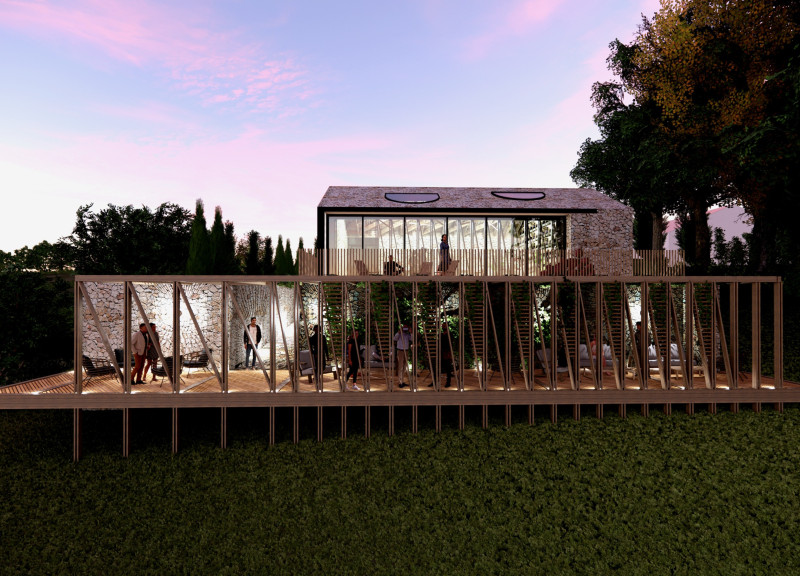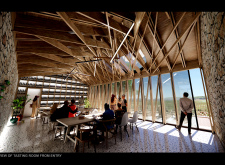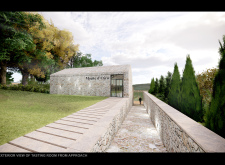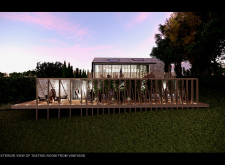5 key facts about this project
The tasting room comprises a large open space characterized by dynamic ceiling beams that create an intricate geometric pattern. This design feature not only enhances the spatial quality of the interior but also reflects organic forms found in nature. Extensive use of glass throughout the structure allows for ample natural light and visual connections to the vineyards, contributing to a seamless transition between the indoor and outdoor environments.
Materiality plays a significant role in the project. The use of locally sourced stone for the façade anchors the building within its geographical context, while warm wood elements enhance the tactile experience and establish a welcoming atmosphere. The combination of glass, stone, and wood exemplifies a thoughtful selection of materials that are both visually appealing and environmentally sustainable.
Unique Design Approaches
The Monte d'Oiro Tasting Room distinguishes itself through its emphasis on experiential design. The space is organized around a central tasting area, surrounded by outdoor decks that extend into the vineyard. This layout encourages social interaction among visitors while providing tranquil areas for individual enjoyment of the product and landscape. The landscape design incorporates native plants, further enhancing ecological sustainability while framing the views of the surrounding vineyards.
Another notable aspect of the design is the integration of environmental considerations. By maximizing natural ventilation and utilizing local materials, the project reflects an ongoing commitment to sustainability. The extensive glass elements allow for varying light conditions throughout the day, promoting a dynamic interaction with the environment and cultivating an appreciation for the natural setting.
Exploring Architectural Insights
The Monte d'Oiro Tasting Room represents a well-considered response to the needs of a wine-tasting venue while reinforcing a connection to the landscape. To gain a deeper understanding of the architectural decisions behind the project, interested readers are encouraged to explore architectural plans, sections, and design ideas that reveal the project’s intricate details and design logic. Delving into these materials offers further insights into how the architecture not only serves its function but also contributes to a richer experience of the vineyard.


























